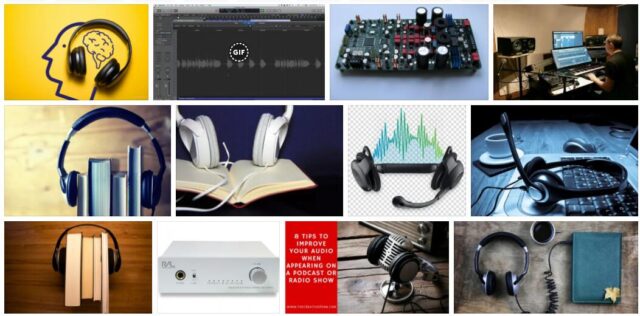Audio is a term that comes from the English language, although its most distant etymological antecedent is found in Latin. The concept of audio is used to name the technique that makes it possible to record, transmit and reproduce sounds.
For example: “My son is a specialist in audio engineering”, “I have been reading several manuals on the Internet to learn about audio and thus be able to improve the recordings we make”, “Do you know someone who knows about audio? I would like to record some songs with my band ”.
Aaudio is called, on the other hand, the signal corresponding to sounds. It can be said that an audio is an analog signal that, at an electrical level, is equivalent to a sound signal. Its frequency is between 20 and 20,000 Hz, which is the range that a human being can hear.
A microphone converts sound waves (which are air pressure waves) into an analog electrical signal (audio). To do the reverse process, a loudspeaker (or loudspeaker) is used, which causes the analog electrical signal to be transformed back into a sound wave. In this way, when a singer performs his songs with a microphone and the sound comes out through speakers, the audience hears the audio.
Like the image, the audio is characterized by the fact that each individual can perceive it in a different way, with particular nuances or associations. This does not mean that while one person hears a natural F another hears a sharp D, but rather that the same note, the same melody can elicit different sensations in each one.
Similarly, we do not all have the same talent for recognizing sounds, memorizing songs, and reproducing them accurately. If we add this to what was expressed in the previous paragraph, it is easy to understand that the same audio source (be it a song, a melody or a work composed of many pieces) cannot be described in the same way by a large group of people.
In the case of digital audio, the analog electrical signal that is responsible for the representation of the sound wave is digitally encoded. The WAV format, to cite one case, presents digital audio with all the information resulting from encoding. The MP3 format, on the other hand, compresses the data.
The audio formats and the different technologies used for their transmission cause various complications for users, since many times they must face the purchase of adapters and converters to overcome incompatibility problems between their equipment. It does not matter how much money we have spent on a home theater system: if it does not support a certain format that one of the devices that we wish to connect to it requires, then we will have to make a decision that will surely lead to a new monetary investment.
Audio, finally, is a compositional element that refers to sound and the act of hearing: audiovisual, audiobook, audio frequency, etc.
The incorporation of audio in the film industry took more than three decades to wait, during which there was what we know today as silent movies, the silent period or the age of the silver screen. In short, until 1929, most films only had images, although in some projection rooms there was a pianist who played different melodies as an accompaniment, or even orchestras dedicated to recreating certain sound effects.
Nowadays, audiovisual content represents practically the standard, in large part because of the success of the YouTube social network, in which there is no limit to the content genre: from news reviews that could perfectly be published in writing to series and complete movies, on this platform audio and image coexist as if they were interdependent.
